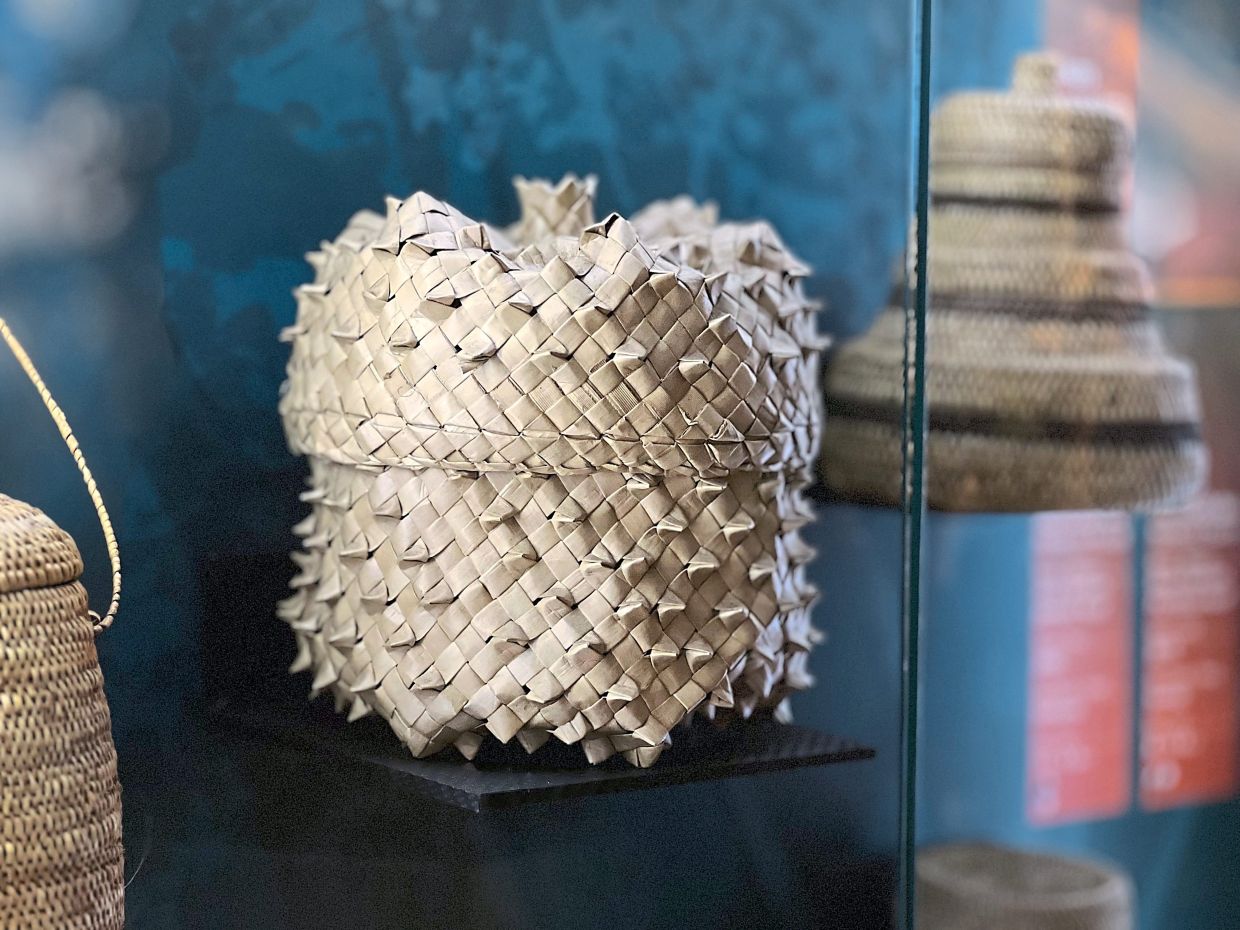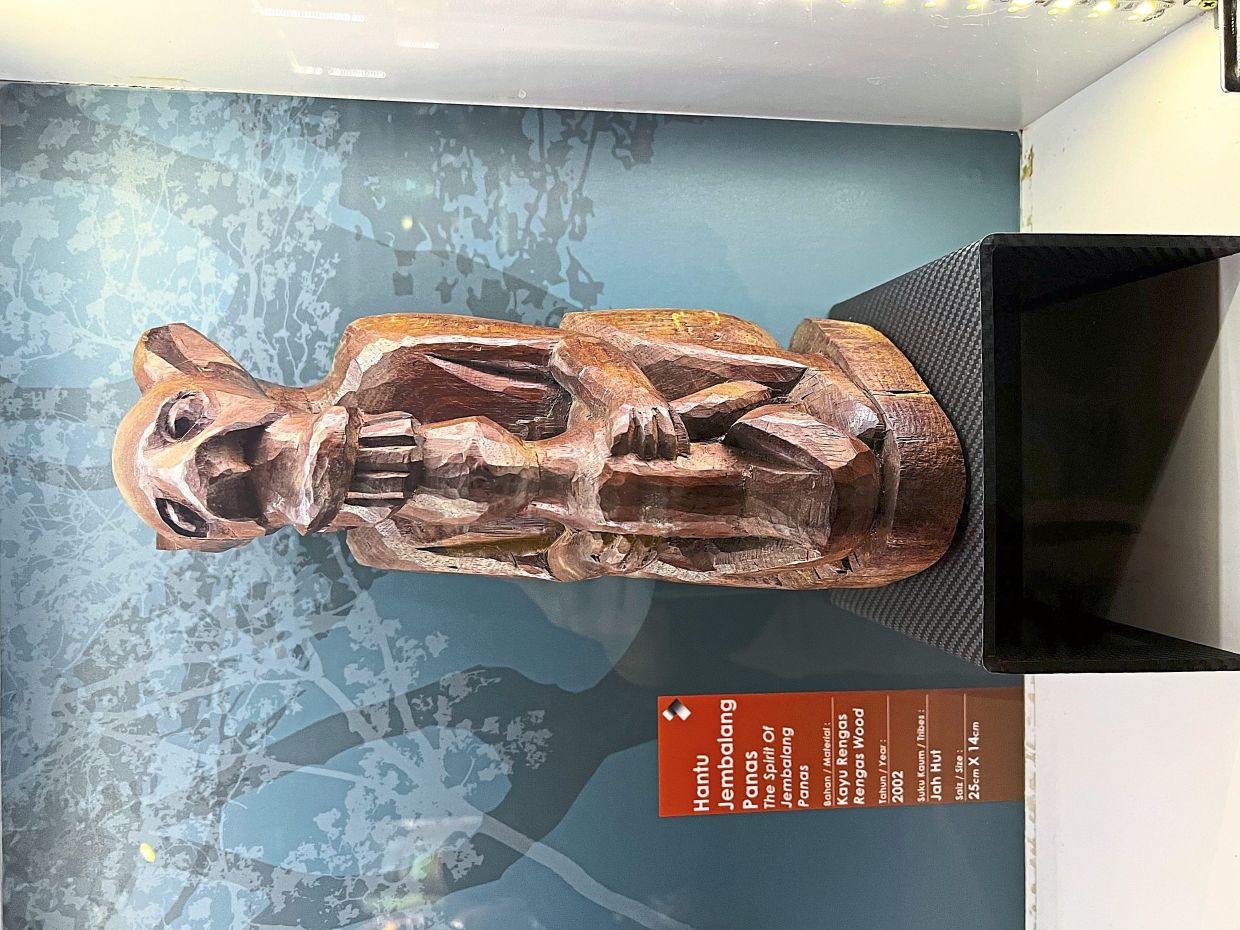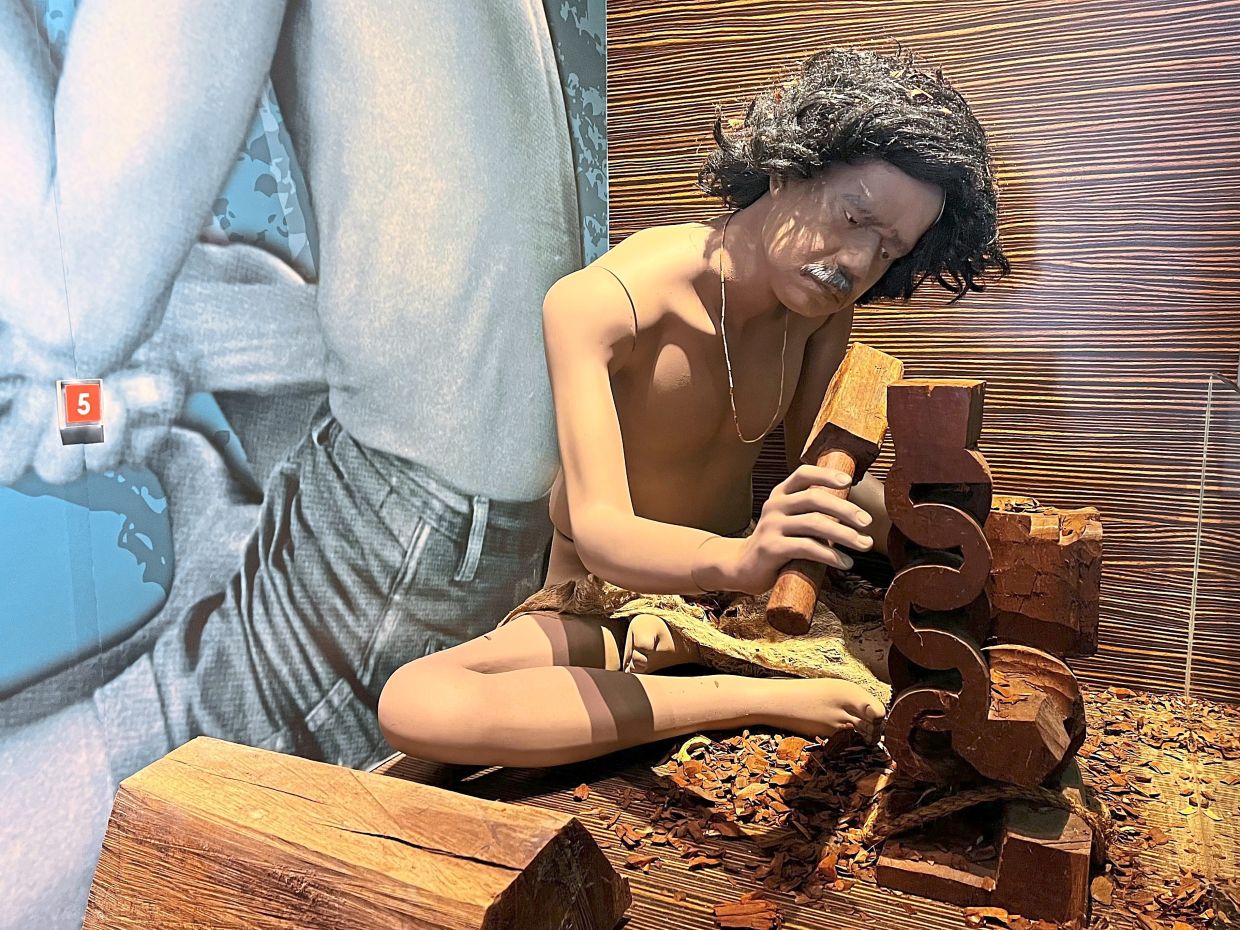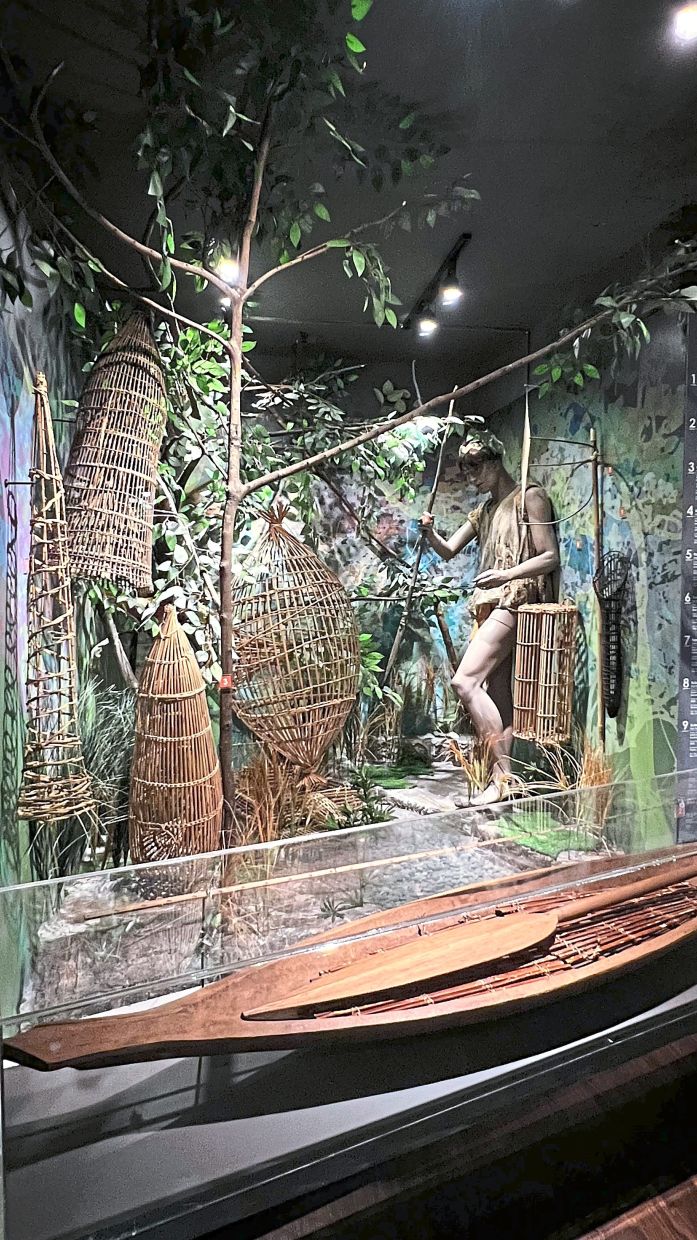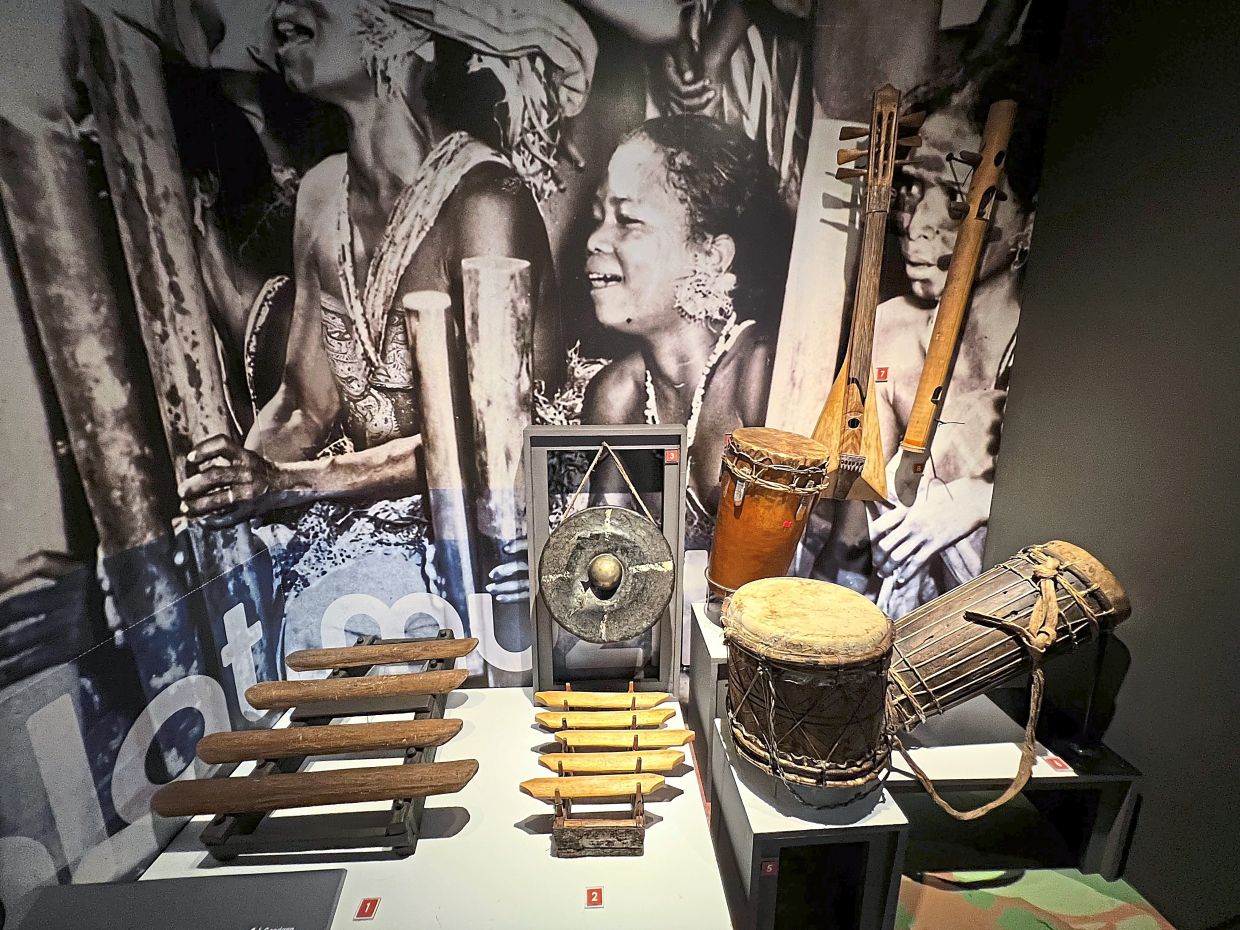A display of the traditional clothes made out of tree bark.
A group of young students sat cross-legged on the floor, listening attentively to the facts being relayed by the museum guide – quite an encouraging scene to behold, one that promises the cultural legacy of Malaysia’s Indigenous folks will not fade into obscurity in the near future.
The Orang Asli Craft Museum in Kuala Lumpur, the location where this scene was set, plays an important role in disseminating knowledge about the Indigenous minority of Peninsular Malaysia not only to the younger generations but to the public in general.
It may be humble in size, even more so in comparison to the National Museum that it stands next to, but its space is largely adequate to exhibit the crafts made by the country’s various Orang Asli sub-ethnic groups.
Walking past the focused crowd, we ventured further inside the museum. Through a short, narrow passage decked with images of hunters and their hunting equipment, we reached a rectangular room at the back that showcased more of the Orang Asli crafts.
While the front part of the museum exhibited masks and sculptures, here in the back the displays were more varied. From bubu (fish trap) in various sizes to blowpipes and wooden coffins, along with musical instruments, dances, traditional wear and woven baskets, this was an exhibition that allows a glimpse into the daily life of an Orang Asli.
“We will occasionally invite them here to do the crafts, such as weaving, carving, and dancing, in person,” said Asmawi Mohamed Yunos, head of the museum. He added that programmes such as these, namely Living Museum Day, offered visitors a closer look at the meticulous craft production.
Having previously spent nearly a decade handling the Orang Asli Museum in Gombak, Selangor, and later heading the Orang Asli Craft Museum since 2013, Asmawi stated that he continued to keep in close contact with representatives from the community to ensure that the information and crafts displayed in the museum accurately depict their cultural heritage and lifestyles.
“They were involved in the planning of the displays and these exhibited items were either bought directly from them, or from collectors,” he shared, stating that the last major purchase was done in 2005, totalling RM2.5mil for 50 pieces of crafts.
At the time, the museum consisted only the front part, limiting the number of items and information that could be displayed.
Attracting visitors
The museum opened to the public on July 7, 2003, and had been receiving approximately 30,000 local and foreign visitors monthly at the time. The encouraging reception eventually led to its expansion in 2014, affording it more space for displays.
Unfortunately, the introduction of the entrance fee – though quite low at the price of RM2 for local adults and RM5 for foreign tourists – markedly reduced the number of monthly visitors. “The number went down to between 4,000 and 5,000 visitors per month,” Asmawi lamented.
“To attract more visitors, we started doing more programmes and activities. In fact, for this year, we are planning to hold a three-day celebration in conjunction with the International Day Of The World’s Indigenous Peoples,” he revealed.
“It will be held from Aug 9 to 11, and part of the space at the National Museum will also be used; we will invite Orang Asli to build their huts there.”
The temporary dwellings will not be just for show either, as visitors will be able to enter it and experience life in an Orang Asli hut – replete with residents going about their daily lives inside!
As evidenced during our visit, the museum also welcomes educational tours from schools and other learning institutions and organisations (Asmawi shared with us that the very next day, a 100-person group from Bank Negara would be dropping in for a tour) in order to encourage more locals to visit.
When asked regarding the frequency of updates, as certain information in the displays may become obsolete over time, such as the data of Orang Asli population in Malaysia, Asmawi explained that the museum can only do certain updates based on data provided by the Department of Orang Asli Development (JAKOA).
“This population data is from 2012, so the number is no longer accurate,” he pointed at the display situated right next to the entrance. “As of 2023, there are already more than 200,000 Orang Asli in the country. Once we receive the latest data from JAKOA, we will upgrade this data display. Also, when it comes time to upgrade the whole museum, we will change the entire exhibit to showcase other aspects or items of the Orang Asli crafts.”
Craft masters
As there are three ethnic groups of Orang Asli, namely the Negrito, Senoi and Proto Malay – each can be further classified into six sub-ethnic groups, totalling 18 overall – there is no shortage of crafts to be shared and admired.
“Their crafts are made so meticulously and intricately,” said Asmawi, adding, “... which is why when we encourage them to sell their crafts, such as their baskets, these items are sold out fast. Many people are eager to purchase these for their high aesthetic value.”
Speaking of encouraging the sell of these handmade crafts, Asmawi shared that in the olden days, Orang Asli used to make items such as woven mats and baskets not for sale, but only for bartering.
However, when the government realised the income generating potential of these well-made products, the Orang Asli community was encouraged to make more of them so they may be sold as souvenirs and such.
“Unfortunately, not many of the younger Orang Asli generations can carve the way their elders did,” he said, explaining why wooden sculptures may be harder to come by these days, especially the ones that are much larger in size carved by the Mah Meri and Jah Hut sub-ethnic groups.
“They can still do the smaller ones, but this is exactly why it is important for us to preserve the sculptures and the other items we have in our museum, so that the legacy of the skilled Orang Asli craftsmen lives on.”





